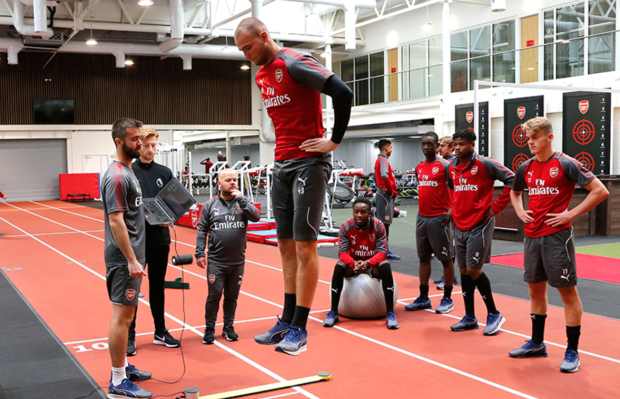- Confirmed line-ups: Ipswich Town vs Arsenal – Trossard & Zinchenko start
- Arsenal make enquiry for Italian midfielder Nicolò Rovella
- Arsenal in strong position to sign Viktor Gyokeres
- Arsenal ‘best positioned’ to sign Lyon ace Rayan Chekri
- Arsenal learn Benjamin Sesko’s asking price from RB Leipzig
- Arsenal plot audacious swoop to sign Ousmane Dembele
- Arsenal showing ‘concrete’ interest in Kingsley Coman
- Arsenal in front of the queue to sign Jesus Rodriguez
- Arsenal eye AC Milan’s Malick Thiaw for summer move
- Arsenal want Guler & Endrick in a surprise swap deal
Staying Safe in Sports: What to Do During a Sports-Related Injury
There has been a dramatic rise in people taking to sports, leading to a spike in sports-related injuries. Sadly, many athletes take injuries casually, ignoring the uneasiness and hoping the injury will subside gradually. This approach only makes it much worse and chronic.
Athletes who take part in court and field sports face a high risk of hurting their ankles and feet because these areas are constantly affected while performing and training, and football is one of the most affected sports. This is why the health of the ankle and feet is crucial when it comes to maintaining a high-performance level.
Being prepared is the first step in preventing lower-body injuries. So, here are simple follow-up exercises you should know about that will quicken the recovery process after a sports-related injury.
Calf Stretch with a Towel
This exercise stretches the calf muscles and increases ankle dorsiflexion effectively and safely.
Sit on the floor and straighten your knees. Loop a towel around both toes and pull the towel towards yourself until you feel a stretch in the calf muscles. Hold on to this position for around 30 seconds before releasing it. To start with, do 3 to 5 sets.
Ankle Pump Ups
This static-stretching exercise is excellent for improving your foot’s upward movement, strengthening the muscles present in front of lower legs.
You can do ankle pump-ups standing or seated on a chair. Begin the exercise by pulling the toes upward, as if you are attempting to make your toes touch the shin bone. Hold on for 10 seconds before releasing the tension. Start with 3 – 5 sets and increase the number of sets according to your convenience.
Ankle Pump Downs
The ankle pump-down exercise increases your foot’s downward movement or ankle plantarflexion. This includes the soleus muscles and gastrocnemius muscles. Like ankle pump-ups, you can do this exercise sitting on a chair or in standing position.
Point your toes downward until you feel a stretching sensation in the calf muscles, located at the backside of your legs. Hold on for 10 to 15 seconds before the release. Same as ankle pump-ups, do 3 to 5 sets and gradually increase it.
The Ice Bottle Roll
To do this exercise, you have to fill a disposable plastic bottle with water and freeze it. Put the frozen bottle on the floor and place your foot on it. Roll the ice-bottle under your foot for three to five minutes, two to three times a day. Remember to move your foot all the time without stopping.
According to a survey, every year, around thirty-six thousand Australians are admitted to hospital due to sports-related injuries. Some of the typical sporting injuries that Australians suffer from include anterior cruciate ligament injury (knee joint ligament injury), hamstring strain, plantar fasciitis (heel-bone tissue damage), ankle injuries, and fractures. Although medical attention can treat these injuries, you, however, need a podiatrist to recover fully.
If you are an athlete and have had any of the above lower-body injuries, consider visiting one of Australia’s top sports podiatrist in Sydney for an injury rehabilitation program.




